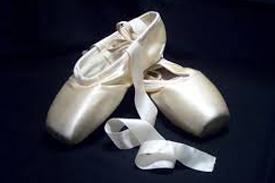 Dance students new to pointe are always excited to start, in awe of what they have seen through their training so far: watching older students or professional dancers en pointe is an inspiring experience. Dancers who are not training at vocational dance schools are usually allowed to begin pointe in their early teens, due to the development of their bones and technique. Other factors which must also be considered are the regularity of ballet classes, and a teacher’s approval. See some tips for sewing your pointe shoes.
Dance students new to pointe are always excited to start, in awe of what they have seen through their training so far: watching older students or professional dancers en pointe is an inspiring experience. Dancers who are not training at vocational dance schools are usually allowed to begin pointe in their early teens, due to the development of their bones and technique. Other factors which must also be considered are the regularity of ballet classes, and a teacher’s approval. See some tips for sewing your pointe shoes.
To make the time en pointe more comfortable (and more enjoyable!) there are a few things that dancers can do. Strong abdominals are vital for pointe work, as it is a strong core that will help dancers lift their weight out of their shoes. Also important is correct body placement and flexibility and strength in the ankle and foot, which must be built up before and during pointe training. This is primarily done through learning to roll up onto pointe and down through the shoes.
Whilst you are training in pointe, you will spend a lot of your class and rehearsal time in pointe shoes, to help them mould to your feet, also so you get used to the sensation of moving in pointe shoes. You may be required to wear pointe shoes throughout all of your regular technique classes, to help articulate the foot in the shoes rather than sticking to flat shoes until the end of class for separate pointe work.
Your feet should be snug in pointe shoes, but not so the foot cannot move and the toes cannot lie flat when working through movements. The important part of the work undertaken in a ballet class is that the dancer can feel the floor sufficiently, and can use it properly to work the feet and legs. Different exercises at the barre require the feet to work in different ways, so the more awareness of how the feet feel and move, the more articulation.
Ultimately, dancers must take good care of their feet, as well as their shoes by airing them between lessons to prevent fungus and bacteria growth. Don’t give up if it doesn’t feel quite right, and approach a teacher or studio director if you need more help.
